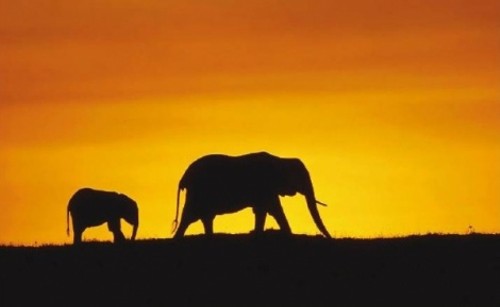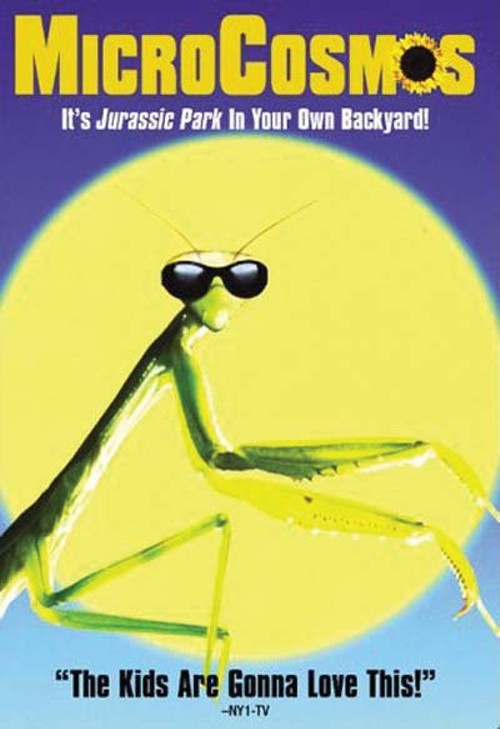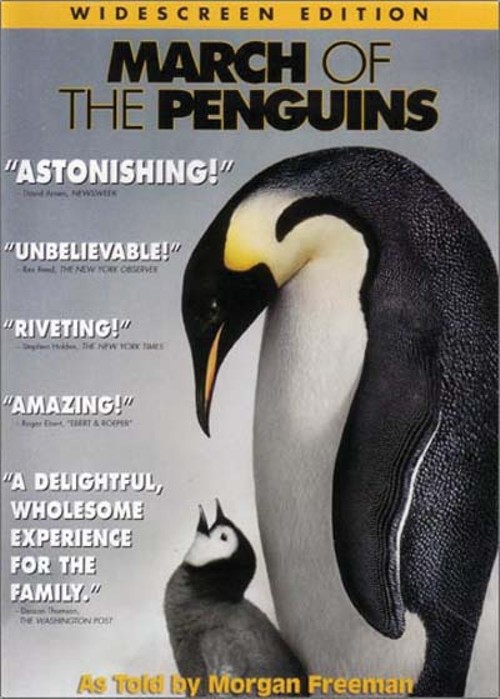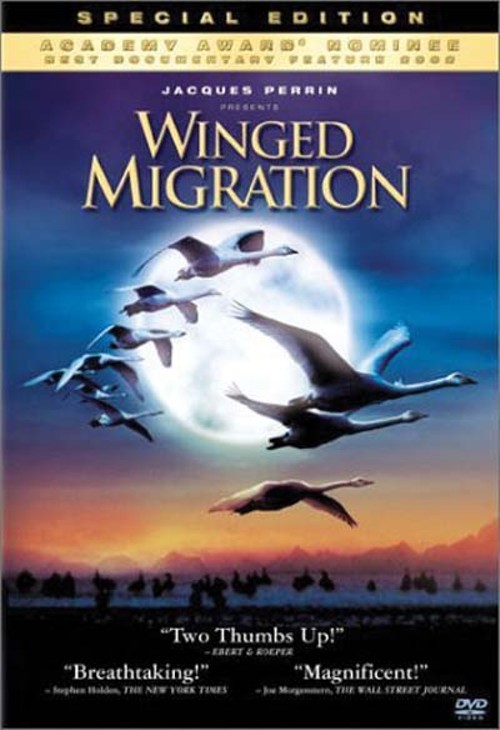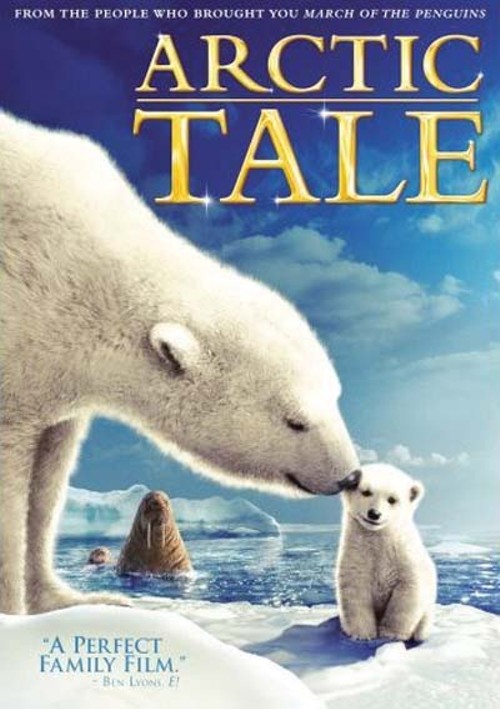DisneyNature’s Earth
Recycles of Nature: DisneyNature’s Earth tries to make the familiar seem thrilling.
By Scott Renshaw @scottrenshawSixty years ago, Disney blazed the trail for nature filmmaking. It seems kind of unfair that today, the company seems like it’s bringing up the rear. While the new big-screen documentary Earth marks the launch of the new DisneyNature specialty division, it’s hardly the first time the Mouse House has shown an interest in animals that aren’t hand-drawn.
In the 1950s, Disney’s True-Life Adventures became the gold standard for making nature approachable. Thanks to the genial narration of Winston Hibler and a strong storytelling sensibility, kids (and their parents) were able to see wild animals up close, and connect with them as cinematic characters.
But over subsequent decades, Disney gave up its legacy to others. Nature footage largely became the province of cable networks like Discovery and Animal Planet.
When the big screen did begin re-embracing the nature documentary, whether in IMAX presentations or in successful features like Winged Migration and March of the Penguins, filmmakers already knew the wisdom of providing exotic spectacle and/or humanizing their subjects. Earth arrives as a solidly made addition to the ranks—but it’s almost impossible for it not to feel like a copycat.
Directors Alastair Fothergill and Mark Linfield shape their story into a sort of “year in the life of the planet,” spanning the globe for epic tales of survival (and cute babies) narrated by James Earl Jones. In the Arctic, they follow a polar bear mother and her two cubs, as well as a male polar bear struggling to feed on thinning sea ice. In Africa’s Kalahari Desert, an elephant herd—including a mother and new calf— make a long dry-season trek to find water and food. And in the Pacific Ocean, a mother-and-child humpback whale duo make an even longer trek from tropical birthing waters to feeding grounds in Antarctica.
Those three stories provide the film’s backbone, but it has plenty of other ground to cover— and consequently begins to seem as though it lacks an identity. At the outset, it looks like it’s going to follow Arctic Tale as advocacy filmmaking about the impact of climate change, except that the notion only pops up sporadically thereafter, as though the directors were timid about appearing too strident. The January-to-December structure provides a great anchor for seasonal changes, with gorgeous time-lapse shots of trees passing from green to bright fall colors. There are also plenty of images focused on impressive numbers of animals in motion, often providing the sense that the film is more about an awe-inspiring big picture than the kind of individual stories that deliver an emotional connection.
With no unique voice, Earth is often little more than a reminder of things that other movies have done better. For all of Arctic Tale’s sentimentality, it was much more focused in both message and narrative. The bird’s-level-view footage was more gasp-inducing in Winged Migration; the panoramic footage can’t hope to match the best moments in IMAX nature docs; a slow-motion attack on a sea lion by a great white shark seems like little more than an outtake from Discovery Channel’s “Shark Week.” Even the 2006 Slamdance short Flight of the Mergansers was first to capture the goofy sight of tree-born ducklings launching themselves into the air. Too much feels recycled, right down to having Jones—the voice of The Lion King’s Mufasa—refer to “the circle of life.” Earth plays like a sampler platter of the last 30 years of nature documentaries.
Yet for all that, there are still moments when Earth finds something uniquely gripping. The strutting mating dances of New Guinean birds of paradise make for hilarious show, and there’s a great late sequence in which the starving male polar bear makes a desperate attack on a walrus.
The most innovative bit makes use of night-vision photography, watching as a pride of lions gangs up on an adult elephant. There’s still room in this genre for innovation, and when you find it, it can still be fascinating.
In fact, it may actually be even more fascinating watching the filmmakers at work. Earth’s closing credits include terrific footage of the filmmakers at work, including fleeing to safety from a polar bear, swimming with humpbacks and risking death in a hot air balloon. At this point, maybe the commitment of people who still want to show us the world’s wonders is the kind of true-life adventure that would really feel new.
EARTH
Documentary
Narrated by James Earl Jones
Rated G
Try These:
| Microcosmos (1996) Kristin Scott Thomas Rated G |
|
| March of the Penguins (2005) Morgan Freeman Rated G |
|
| Winged Migration (2003) Philippe Labro Rated G |
|
| Arctic Tale (2007) Queen Latifah Rated G |
Speaking of...
-
The Good Line
Exploring documentary film with the SLC production company.
- Dec 30, 2015
-
South of the Point: Hikes That Don't Suck
- Aug 9, 2012
-
Everest Nuage Tibetan Restaurant
Tibetan food meets teppanyaki in downtown Salt Lake City.
- Mar 14, 2011
- More »
More by Scott Renshaw
-
Film Reviews: New Releases for April 12
Civil War, Escape from Germany, Coup de Chance, Hundreds of Beavers, La Chimera, Sting
- Apr 11, 2024
-
University of Utah School of Music premiere of A.L.I.C.E.
Composer connects the Lewis Carroll story to her experience living with autism
- Apr 10, 2024
-
Beavers and Spiders and Thieves, Oh My
Three new films cover a wide range of styles.
- Apr 10, 2024
- More »
Latest in Film Reviews
Readers also liked…
-
Power Plays
Two satirical comedies explore manipulations and self-delusions by those with power.
- Aug 31, 2022


